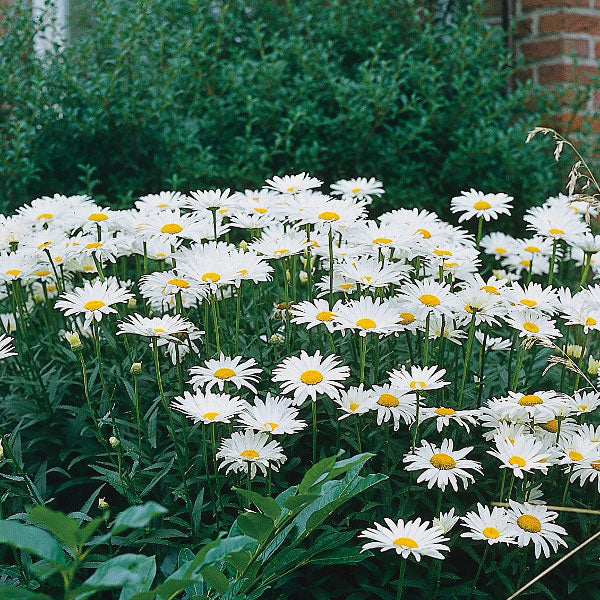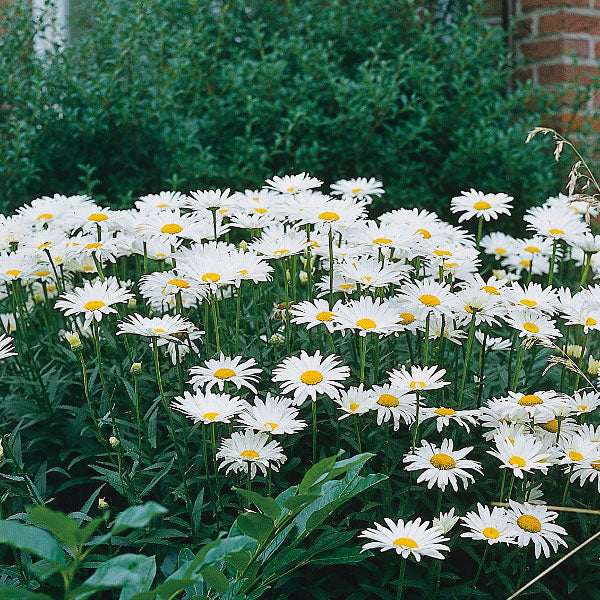Ox-Eye Daisy (Leucanthemum vulgare)
Ox-Eye Daisy (Leucanthemum vulgare)
Packet Size: 500 seeds
Couldn't load pickup availability
Ox-Eye Daisy (Leucanthemum vulgare) is a cheerful native wildflower with classic white petals and sunny yellow centres. It’s happiest in poor soil and looks lovely planted in drifts through a wild corner or under trees in light, dappled shade. A low-maintenance option that brings a natural feel — and the flowers are edible too.
🌸 Flowering: May to August
📏 Height: to 90cm
🌿Perennial
SOW: best sown directly into finely prepared soil in spring. You can also sow in September for earlier flowers the following year. If you want small clumps, sow pinches in pots using a low-nutrient, well-drained mix.
GROW: plant out pot-grown clumps about 50cm apart. Ox-eye daisy prefers poor soil and thrives in full sun or light shade—perfect for a wild corner. Deadhead to encourage a second flush of flowers.
ENJOY: scatter the petals over salads for a splash of white — they stand out beautifully against red and purple leaves. Easy, useful, and a little bit wild.
📌USES
Wildlife-friendly
- Bees, including bumblebees and honeybees, are attracted to the abundant nectar and pollen.
- Butterflies such as Small Tortoiseshell, Meadow Brown, and Peacock often visit for nectar on warm days.
- Moths like Heart and Dart, Common Pug, and Mother-of-Pearl use Ox-Eye Daisy as a food source or visit the flowers.
- Beneficial insects including ladybirds and hoverflies are drawn to the flowers, helping to control pests naturally.
- Leaving seed heads over autumn provides food for seed-eating birds like goldfinches.
Edible
- The white petals are mild in flavour — use fresh as a garnish.
- Best avoided: the yellow centre, which can be bitter.
- Use sparingly for a touch of wild elegance.
In the garden:
- Thrives in poor, well-drained soil.
- Tolerates light shade — perfect for naturalising under trees.
- Returns year after year and gently self-seeds if allowed.
- Mix with other native flowers for a meadow effect.
Historical
- Also known as “moon daisy” or “dog daisy” in folk tradition.
- Once used in herbal teas and remedies, though mostly valued now for its beauty and wildlife benefits.
Other
- Wildlife-friendly and safe for pets.
- Can be mown back after flowering to tidy up or encourage fresh growth.
- A reliable choice for sustainable or low-input gardens.
Suits
- Wildlife gardens and meadows
- Orchard edges or beneath trees
- Cottage-style or naturalistic planting
- Gravel gardens or low-maintenance borders

Collapsible content
Sowing
- Mar
- Apr
- May
- Sep
Harvesting / Flowering
- May
- Jun
- Jul
- Aug

